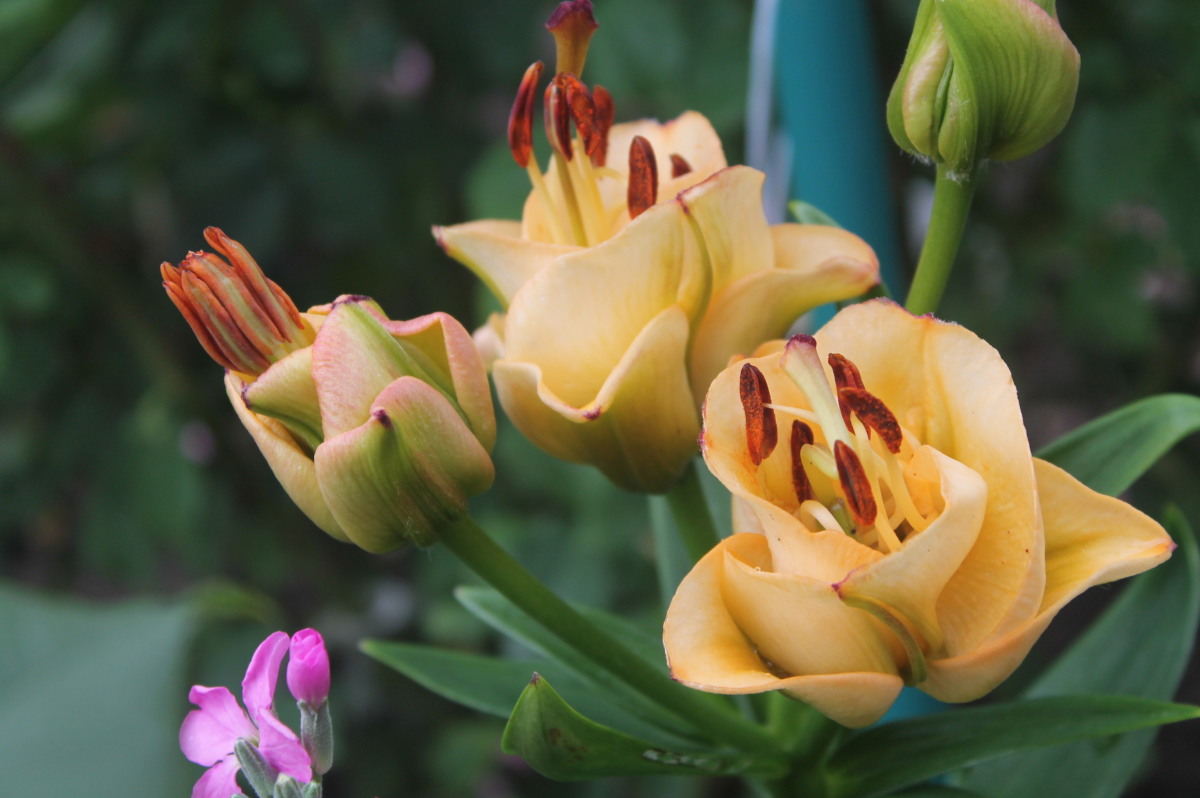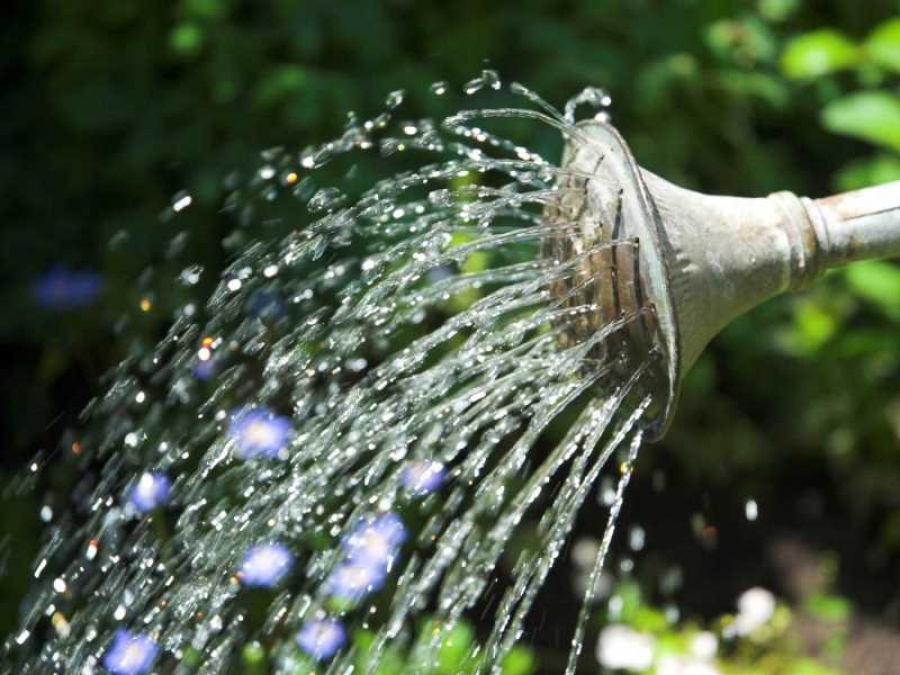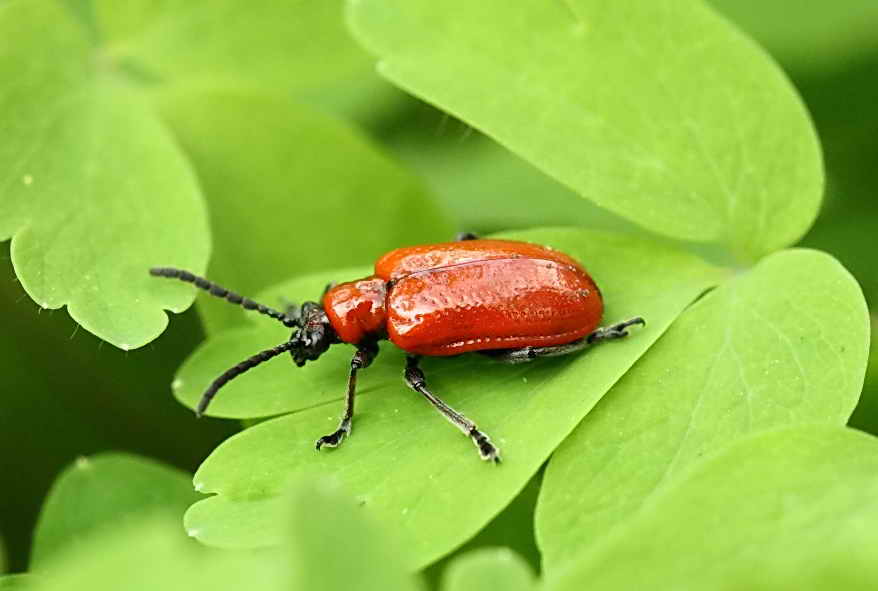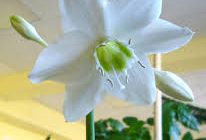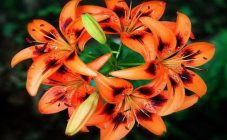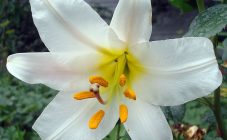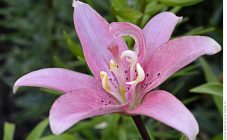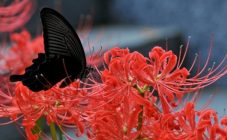Content:
Lily Favoritka is a new species of flowering plant developed by botanists. It is a perennial, bright, sunny flower of an unusual shape with short rounded petals and elongated stamens. The favorite belongs to the tulip lily variety, it is so unusual in shape that several flowers can be seen in it at once.
Lily Favorite is a terry hybrid called Asian. Asian hybrids are the most complete section, with over 2000 unpretentious, hardy, frost-resistant varieties. They multiply easily, take root in almost all regions.
In 2014, the Norwegian scientist Antra Balode, breeder of the Salaspils Botanical Garden, patented a new type of tulip lily, obtained by crossing the Triumph tulip and the yellow lily Ceb Dazzele. Soon, the novelty was awarded the Cup of the Lily Growers Association.
This variety has been registered under the name Double Asiatic Lilium Apricot Fudge, which means - double Asian lily Apricot Fantasy.
Lily Favorite characteristics and description
The favorite is a tall, previously abundant flowering plant with a well-developed bulbous root. The flower tubers are white, friable, spherical, large, up to 15 cm in diameter, protected by hard brown scales. Lily Favorite belongs to the bulbous species. At the base of the leaves and in the axils of the flower, bulbs are formed - air bulbs.
The bush reaches 120 cm. The lower leaves are more like tulip foliage - dense, glossy, wide, emerald green, up to 20 cm long. The flower branch is covered with small, lighter oval leaves. One shoot grows 10-12 flowers about 10 cm in diameter, collected in an umbellate inflorescence, facing up. At the end of November, the Favorite lily ripens fruits in the form of boxes, in which up to 10 pieces. flat seeds.
The petals in the inflorescence are divided into two rows - hence the double prefix to the name. The first layer is a rich orange color closer to the calyx, a soft pink tint in the middle, and a juicy yellow edge of the petal. A light green vertical stripe runs from the base to the top. The shape is round, the petals are slightly curved in an arc. The second row is peach-colored, velvety, terry wavy petals, curved inward. The yellow pistil and chocolate stamens are nearly double in size.
Lily Favorite landing and care
Lily Favoritka is a frost-resistant unpretentious species. Propagated by division of the root (children), scales, bulbs, sometimes cuttings and seeds. Growing a Favorite is a pleasant and not troublesome activity. The main thing is to take care of her on time and correctly, and she will certainly delight you with beautiful unusual flowers.
When choosing bulbs for planting, you should pay attention to the scales - they should be fresh, the tubers - clean and without greenish mold and rot, the bottom should be dry, without damage.Additional information: pay attention to the length of the roots, so that they are not shorter than 5 cm. If the bulb is good and the root system is insufficient, then before planting it should be placed in moist moss or sand in a dark and dry room.
Prepare the soil 2 weeks before planting. Dig the area to a depth of 35 cm. Prepare fertilizer by mixing humus, ash, peat and 1 tbsp. l. superphosphate. Spread over the bed, level with a rake and water.
It is necessary to make holes up to 30 cm deep, the deeper, the more children the flower will give. The distance between the holes is 25 cm. Pour sand on the bottom of each hole. Lay out the walls of the pits with a wire mesh - this will protect the tubers from field mice.
Prepare the bulbs - peel dry and brown scales, remove rot and spoiled areas, cut dry roots. Place the tubers in the Fundazole solution for an hour. Put the onion in the hole, straighten the roots without bending or breaking them, completely cover with sand, sprinkle with earth on top, water and tamp and cover with bark mulch. Mark the drop off location.
The flowering bush must be constantly moisturized. In the hot period, it is necessary to water the flower at the root in the morning and loosen the ground each time. Important: watering is needed until autumn, even if the plant does not bloom. Watering is recommended at the root, not on the leaves. Drops on the foliage work like lenses, attracting the sun's rays, and burns will appear on the flower.
In order to prevent the soil from drying out, it must be mulched with humus. Lily Favorite has a root system that is very sensitive to the sun's rays, so it will be useful to take care of creating a shade - to plant various plants with dense foliage nearby.
When buds appear, the Favorite lily will respond positively to feeding with ammonium nitrate dissolved in water. And at the time of violent flowering, phosphorus and potassium will benefit her. Note to the summer resident: you should not use manure as fertilizer. The fact is that it is rich in microflora, and organics to the detriment of lilies.
Timely loosening and removal of weeds will also have a beneficial effect on the plant. The flowering stems of the Favorite lily must be tied to a support so that they do not break or bend. It is best to cut the buds of first-year bushes without letting them open.
Lily Favorite in one place can grow for 3-4 years, then it becomes cramped, the plant stops blooming and weakens. In the fall, a month after flowering - at this moment the bulbs are the strongest, the bush should be dug out, separated from the mother's bulb, cleaned from the ground and dried. Pour peat into a cardboard box, put tubers on it, again a layer of peat and put it on the loggia or lower it into the basement. Additional information: periodically check the condition of the bulbs. If the roots have dried up - you need to sprinkle the peat with water, have started to rot or mold has appeared - then wipe the tubers with a potassium solution. In the spring, plant on a new site.
Lily Favorite diseases and pests
The lily beetles are the most dangerous. They can be picked by hand or treated with flowers using karbofos. But from this drug, the beautiful lily Favorite loses its appearance, the leaves and buds are covered with brown spots. The method of dealing with flies and aphids is the same. Mice, larvae, wireworms, spider mites, thrips and bears damage the bulbs. You can deal with them with the help of colloidal sulfur.
From excess moisture, the Favorite lily can get sick with wet (bacterial) and onion (fusarium) rot. Diseased tubers should be dug up and burned. The effects of damp air are brown spotting. From this disease, the stem dies, and the root remains intact. It is necessary to cut off the infected shoots and treat the bush with Bordeaux liquid.
The fungal disease botrytis (gray mold) in the lily Favorite occurs in prolonged rainy weather, when the leaves of the flower do not have time to dry out, and with sudden changes in temperature. It is not difficult to cope with this disease - it is necessary to install a canopy with plastic wrap over the plant.
For prevention purposes, it is necessary to mulch the soil and burn plant waste - leaves, stems, dry flowers.
Lily Favoritka goes well with any garden crops, decorates flower beds, hedges, decorates lawns. It is better to plant it in groups, combining with other plants. Long standing in the cut. The bouquet with this flower is beautiful and fragrant.
